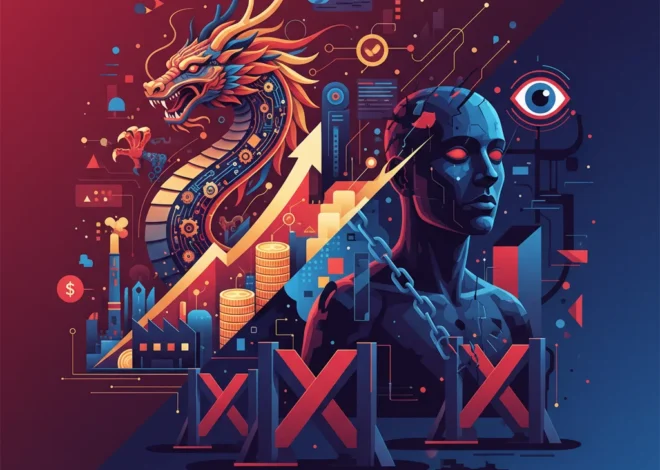
From Main Street to Wall Street: Why Local Financial Roadshows Are a Critical Signal for the Global Economy
In communities across the globe, a quiet but significant trend is taking shape. Local councils and agencies are organizing “money and wellbeing roadshows” to help residents navigate the complexities of winter finances, a direct response to persistent economic pressures. While an initiative like the one detailed by the BBC for residents in Leicestershire might seem like a small-scale, local affair, it serves as a powerful microcosm of the broader challenges and transformations shaping the global economy. For astute investors, finance professionals, and business leaders, these grassroots efforts are not just community news; they are critical data points that signal shifting consumer behavior, emerging market needs, and the future trajectory of finance and financial technology.
This article delves beyond the headlines of a community event to explore the profound implications for the wider economic landscape. We will analyze the macroeconomic forces driving these initiatives, examine the burgeoning role of fintech as a scalable solution, and uncover the actionable insights these trends offer for modern investing strategies. What happens in a local community hall today can forecast the stock market trends of tomorrow.
The Macroeconomic Winter: Understanding the Ground-Level Reality
Community financial support programs are not new, but their recent proliferation and urgency are direct symptoms of a challenging macroeconomic environment. Several converging factors have created a perfect storm, squeezing household budgets and forcing a recalibration of personal finance strategies.
1. Persistent Inflation and Cost of Living
For the past several years, developed economies have grappled with inflation rates not seen in decades. While headline inflation may be cooling in some regions, the cumulative impact on prices for essential goods like food, energy, and housing remains substantial. For example, the UK’s Consumer Prices Index including owner occupiers’ housing costs (CPIH) rose by 3.8% in the 12 months to March 2024, a figure that, while lower than previous peaks, still outpaces wage growth for many (source: Office for National Statistics). This sustained pressure erodes purchasing power and makes it increasingly difficult for individuals to manage daily expenses, let alone save for the future. These roadshows are a direct consequence of this erosion.
2. Global Energy Market Volatility
Winter brings with it a seasonal spike in energy consumption for heating. Geopolitical instability and supply chain disruptions have introduced unprecedented volatility into global energy markets. This translates directly to higher utility bills, a major component of winter financial stress. The need for specialized advice on energy efficiency, tariff switching, and accessing support grants—core components of these roadshows—highlights a systemic vulnerability that impacts both households and the broader economy.
3. The Shifting Landscape of Credit and Debt
In response to inflation, central banks globally have raised interest rates. This policy tool, designed to cool the economy, has a direct impact on consumers by increasing the cost of borrowing. Mortgages, car loans, and credit card debt have become more expensive to service. This environment makes debt management a critical skill, and the financial advice offered at community events often centers on navigating these higher costs, a clear indicator of widespread consumer leverage and sensitivity to central banking policy.
For business leaders and investors, these ground-level indicators are invaluable. They signal a shift towards value-oriented consumer behavior, increased demand for financial planning services, and potential risks in consumer credit-exposed sectors. Beyond the Syringe: Analyzing the High-Stakes Business Model of the Enhanced Games
The Digital Response: How FinTech is Scaling Financial Wellness
While in-person roadshows provide an essential human touch, they are inherently limited in scale and reach. The true revolution in addressing widespread financial precarity is happening in the digital realm. The fintech industry has stepped into the void, developing innovative tools that democratize access to financial management, education, and support. This represents a paradigm shift from reactive, localized support to proactive, personalized, and scalable solutions.
Below is a comparison of the traditional support model versus the emerging financial technology-driven approach:
| Feature | Traditional Model (e.g., Roadshows) | FinTech Model (e.g., Wellness Apps) |
|---|---|---|
| Accessibility | Limited by geography and time; requires physical presence. | 24/7 access via smartphone; globally available. |
| Scalability | Low; dependent on number of staff and venues. | Extremely high; can serve millions of users simultaneously. |
| Personalization | General advice delivered to groups; some one-on-one. | Hyper-personalized insights based on real-time transaction data and AI. |
| Cost to Deliver | High overhead (staff, venue, materials). | Low marginal cost per user after initial development. |
| Core Services | Debt counseling, benefits advice, paper-based budgeting. | Automated budgeting, subscription management, micro-investing, credit score building. |
Companies in the fintech space are leveraging AI, machine learning, and open banking to offer services that were once the exclusive domain of private wealth managers. Apps like Plum, Snoop, and Moneybox in the UK, or Acorns and Chime in the US, help users automate savings, identify wasteful spending, and even begin their investing journey with spare change. This digital transformation is not just a convenience; it is a fundamental restructuring of the personal finance landscape. A recent report highlighted that the global financial wellness benefits market is projected to grow significantly, reaching tens of billions of dollars by the end of the decade (source: Grand View Research), underscoring the massive commercial and social opportunity.
Investment Strategy in an Age of Economic Strain
Understanding these socioeconomic trends is paramount for crafting a resilient and forward-looking investment portfolio. The challenges faced by households translate directly into risks and opportunities in the stock market. An investor who only reads corporate earnings reports without understanding the on-the-ground reality is flying blind.
Defensive Positioning and Value-Oriented Sectors
In an environment where non-discretionary spending is prioritized, “defensive” sectors often outperform. This includes:
- Consumer Staples: Companies providing essential goods like food, beverages, and household products.
- Utilities: Providers of electricity, gas, and water, which have inelastic demand.
- Discount Retail: Retailers that offer lower-priced goods often see an influx of customers during economic downturns.
– Healthcare: Demand for health services and products remains stable regardless of the economic cycle.
The High-Growth FinTech Wellness Sector
Perhaps the most significant growth opportunity lies within the fintech sector itself. The same trends forcing councils to host roadshows are fueling the user acquisition and valuation of financial wellness platforms. Investment in this area can be approached through:
- Publicly Traded FinTechs: Investing in established public companies that are expanding their service offerings into financial wellness and digital banking.
- Venture Capital and Private Equity: For qualified investors, allocating capital to early-stage startups creating disruptive financial technology solutions.
- ETFs: Exchange-Traded Funds focused on the fintech or financial innovation sectors offer diversified exposure.
The key is to identify companies that are not just building slick apps, but are solving real-world financial problems at scale. The Great Crypto Migration: Why Smart Money Is Moving Billions Off Exchanges
The Frontier: Could Blockchain and Decentralized Finance Offer a Better Way?
Looking further ahead, emerging technologies like blockchain could offer even more radical solutions to financial inclusion and community support. While still in its nascent stages, Decentralized Finance (DeFi) presents a compelling vision for a more transparent, efficient, and accessible financial system.
Consider the potential applications:
- Transparent Aid Distribution: Government or charitable funds could be distributed via programmable stablecoins directly to residents’ digital wallets. This would reduce administrative overhead, minimize fraud, and provide a clear audit trail, ensuring support reaches those who need it most.
- Accessible Micro-Lending: DeFi lending protocols could enable peer-to-peer lending on a small scale, providing access to credit for individuals who may be excluded from the traditional banking system without the need for costly intermediaries.
– Community-Managed Funds: Using a Decentralized Autonomous Organization (DAO), communities could collectively manage and vote on the allocation of local support funds. This model of governance, powered by blockchain, could increase engagement and ensure resources are directed towards the most pressing needs as identified by the community itself.
While significant regulatory and usability hurdles remain, the underlying principles of blockchain—transparency, efficiency, and decentralization—are powerfully aligned with the goal of creating a more equitable financial ecosystem. For forward-thinking investors and technologists, this represents the next frontier in the evolution of finance. The Mighty Real ROI: How a Disco Anthem Teaches a Masterclass in Financial Technology and Strategic Pivots
Conclusion: The Big Picture in Small Details
A local council’s winter money roadshow is far more than a simple community event. It is a potent symbol of our current economic reality and a harbinger of future trends in finance, technology, and investing. It underscores the deep and unmet need for financial literacy and support, a need that is creating immense opportunities for innovation.
For business leaders, it’s a call to recognize the financial stress impacting their employees and customers. For finance professionals, it’s a reminder that macroeconomic data has real-world human consequences. And for investors, it is a clear signal: the greatest returns in the coming years may not come from the next social media app, but from the technologies and companies that provide genuine financial stability and empowerment to the millions navigating a complex and challenging global economy. The most valuable economic insights are often found not in the boardrooms of high finance, but in the community halls on Main Street.


